Citroen Jumpy Bus VS Hyundai IONIQ 5 – Specs, Efficiency & Price Comparison
Which model is the better choice – the Citroen Jumpy Bus or the Hyundai IONIQ 5? We compare performance (136 HP vs 609 HP), boot capacity (3497 L vs 520 L), efficiency (24.10 kWh vs 15.60 kWh), and of course, the price (37900 £ vs 37600 £).
Find out now which car fits your needs better!
The Citroen Jumpy Bus (Bus) is powered by a Electric engine and comes with a Automatic transmission. In comparison, the Hyundai IONIQ 5 (SUV) features a Electric engine and a Automatic gearbox.
When it comes to boot capacity, the Citroen Jumpy Bus offers 3497 L, while the Hyundai IONIQ 5 provides 520 L – depending on what matters most to you. If you’re looking for more power, you’ll need to decide whether the 136 HP of the Citroen Jumpy Bus or the 609 HP of the Hyundai IONIQ 5 suits your needs better.
There are also differences in efficiency: 24.10 kWh vs 15.60 kWh. In terms of price, the Citroen Jumpy Bus starts at 37900 £, while the Hyundai IONIQ 5 is available from 37600 £.
Compare all the key specs now and find out which model fits your lifestyle best!
Citroen Jumpy Bus
The Citroen Jumpy Bus offers a versatile and spacious interior, making it ideal for both family outings and professional use. Its sleek design is complemented by practical features, ensuring a comfortable and efficient driving experience. With an emphasis on adaptability, this model caters well to a variety of transportation needs, seamlessly blending functionality with style.
detailsHyundai IONIQ 5
The Hyundai IONIQ 5 showcases a bold and futuristic design that captures attention with its striking facade and sharp lines. This electric vehicle offers an impressive blend of performance and efficiency, making it a compelling choice for environmentally conscious drivers. Inside, the spacious and tech-forward interior provides a comfortable and engaging driving experience for both driver and passengers.
details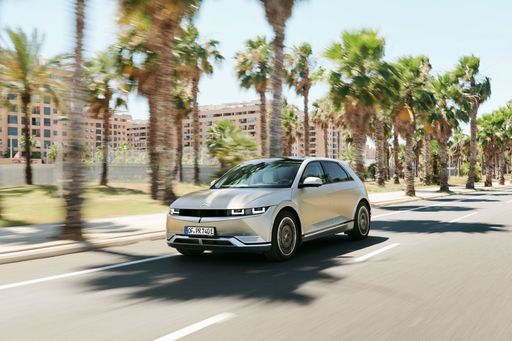 @ hyundai.news
@ hyundai.news
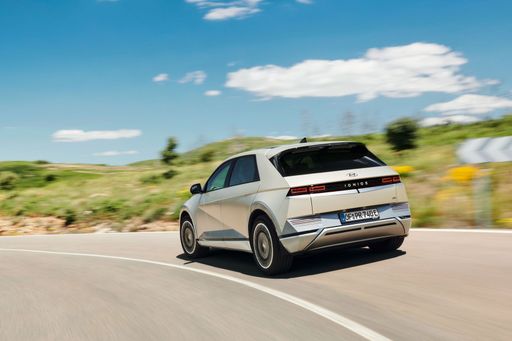 @ hyundai.news
@ hyundai.news
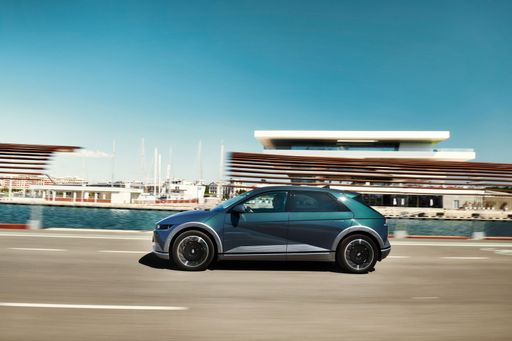 @ hyundai.news
@ hyundai.news
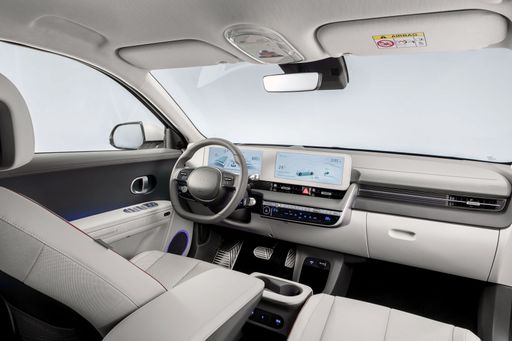 @ hyundai.news
@ hyundai.news
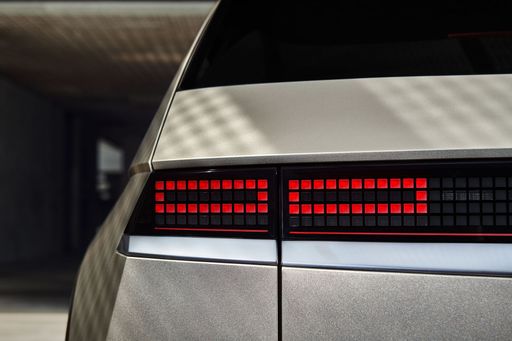 @ hyundai.news
@ hyundai.news

|
|
|
|
|
Costs and Consumption |
|
|---|---|
|
Price
37900 - 43900 £
|
Price
37600 - 64200 £
|
|
Consumption L/100km
-
|
Consumption L/100km
-
|
|
Consumption kWh/100km
24.1 - 24.4 kWh
|
Consumption kWh/100km
15.6 - 21.2 kWh
|
|
Electric Range
221 - 352 km
|
Electric Range
440 - 570 km
|
|
Battery Capacity
-
|
Battery Capacity
63 - 84 kWh
|
|
co2
0 g/km
|
co2
0 g/km
|
|
Fuel tank capacity
-
|
Fuel tank capacity
-
|
Dimensions and Body |
|
|---|---|
|
Body Type
Bus
|
Body Type
SUV
|
|
Seats
9
|
Seats
5
|
|
Doors
4
|
Doors
5
|
|
Curb weight
2018 - 2240 kg
|
Curb weight
1955 - 2275 kg
|
|
Trunk capacity
3061 - 3497 L
|
Trunk capacity
480 - 520 L
|
|
Length
4983 - 5333 mm
|
Length
4655 - 4715 mm
|
|
Width
1920 mm
|
Width
1890 - 1940 mm
|
|
Height
1895 - 1935 mm
|
Height
1585 - 1605 mm
|
|
Payload
850 - 982 kg
|
Payload
385 - 530 kg
|
Engine and Performance |
|
|---|---|
|
Engine Type
Electric
|
Engine Type
Electric
|
|
Transmission
Automatic
|
Transmission
Automatic
|
|
Transmission Detail
-
|
Transmission Detail
-
|
|
Drive Type
Front-Wheel Drive
|
Drive Type
Rear-Wheel Drive, All-Wheel Drive
|
|
Power HP
136 HP
|
Power HP
170 - 609 HP
|
|
Acceleration 0-100km/h
-
|
Acceleration 0-100km/h
3.5 - 8.5 s
|
|
Max Speed
130 km/h
|
Max Speed
185 - 260 km/h
|
|
Torque
260 Nm
|
Torque
350 - 740 Nm
|
|
Number of Cylinders
-
|
Number of Cylinders
-
|
|
Power kW
100 kW
|
Power kW
125 - 448 kW
|
|
Engine capacity
-
|
Engine capacity
-
|
General |
|
|---|---|
|
Model Year
2024
|
Model Year
2024
|
|
CO2 Efficiency Class
A
|
CO2 Efficiency Class
A
|
|
Brand
Citroen
|
Brand
Hyundai
|
Citroen Jumpy Bus
The Citroen Jumpy Bus: A Modern Marvel of Mobility
The Citroen Jumpy Bus stands out as a paragon of modern transportation innovation, bringing together style, efficiency, and advanced technology in one impressive package. As a pioneer in electric vehicle solutions, Citroen has equipped the Jumpy Bus with a host of technological advancements that cater to both eco-conscious individuals and professional users who seek functionality without sacrificing environmental responsibility.
Efficient and Eco-Friendly Performance
At the heart of the Citroen Jumpy Bus is its fully electric powertrain, offering a performance level that matches its petrol and diesel counterparts without the associated emissions. The vehicle boasts a maximum power output of 136 PS (100 kW) and a robust torque of 260 Nm, ensuring smooth and responsive driving. The CO2 emissions from this model remain impeccably non-existent at 0 g/km, highlighting its dedication to environmental conservation.
Range and Charging: Going the Extra Kilometre
The Citroen Jumpy Bus offers a significant electric range, varying between an impressive 221 to 352 kilometres, depending on the configuration. This extended range ensures that the vehicle can accommodate longer journeys and less frequent charges, making it ideal for both urban commuting and intercity travel.
Interior Design: Comfort Meets Versatility
Inside, the Jumpy Bus provides seating for up to nine passengers, blending comfort with practicality. The spacious interior and ample storage capacity of between 3061 to 3497 litres make it an excellent choice for family trips or transporting goods. With a loading capacity ranging from 850 to 982 kg, this vehicle does not compromise on space or flexibility.
High-Tech Features and Safety
Safety and technology are of paramount importance in the Citroen Jumpy Bus. Equipped with advanced driver assistance systems, the model ensures optimal security for occupants. Its automatic gearbox, specifically a reduction gearbox, further enhances the driving experience by enabling seamless gear transitions, reducing driver fatigue, and improving energy efficiency.
Dimensions and Practicality
Measuring between 4983 to 5333 mm in length, and with a width of 1920 mm, the Citroen Jumpy Bus combines significant interior space with a manageable external footprint. This balance allows it to navigate urban environments with ease while still offering the functionality expected of a larger vehicle. With a height of 1895 to 1935 mm, the vehicle maintains a sleek profile, contributing to its aerodynamic efficiency.
Conclusion: A Vehicle for the Future
Priced between €44,230 and €51,230, the Citroen Jumpy Bus presents itself as a competitive option for those seeking an efficient, environmentally friendly, and versatile vehicle. Its myriad of innovative features and state-of-the-art technology underscore Citroen's commitment to future mobility solutions, making it a leader in the modern automotive landscape.
Hyundai IONIQ 5
Introducing the Hyundai IONIQ 5: A New Era in Electric Mobility
The Hyundai IONIQ 5 is a revolutionary addition to the electric car market, blending futurist aesthetics with ingenious technological features. As part of Hyundai's all-electric lineup, the IONIQ 5 exudes a refreshing approach to sustainable motoring, offering a blend of power, efficiency, and innovation that is set to transform everyday driving.
A Futuristic Design
The IONIQ 5 sets new standards in automotive design with its distinctive silhouette. Its clamshell bonnet and pixelated LED light design form a unique visual signature, evoking a sense of modernity and advancement. Built on Hyundai's Electric-Global Modular Platform (E-GMP), this SUV heralds a new direction for electric vehicles, serving both form and function with a flat floor that maximises interior space.
Performance and Efficiency
The Hyundai IONIQ 5 offers a variety of powertrains to cater to different driving preferences. Depending on the model, power output ranges from 170 PS to a staggering 609 PS, with corresponding torque between 350 Nm and 740 Nm. These configurations enable a brisk acceleration capability, reaching 0-100 km/h in as little as 3.5 seconds.
The car’s battery options of 63 kWh and 84 kWh provide flexibility between range and performance. The efficiency of the IONIQ 5 is admirable, with a consumption ranging from 15.6 to 21.2 kWh/100km, ensuring the capability to travel up to 570 km on a single charge.
Innovative Technology
The IONIQ 5 isn't just about efficient propulsion; it's laden with cutting-edge technology that enhances the driving experience. The vehicle includes an ultra-fast charging capability, able to reclaim 80% of the battery life within just 18 minutes. This is complemented by Vehicle-to-Load (V2L) technology, which turns the IONIQ 5 into a power source to charge devices or even other electric vehicles.
Comfort and Convenience
Inside, the IONIQ 5 continues to impress with a spacious and flexible cabin that maximises comfort and utility. Its minimalist dashboard, dual 12.3-inch screens for infotainment and digital instrument cluster, and extensive use of eco-friendly materials contribute to a serene driving environment.
Safety Meets Innovation
Hyundai has equipped the IONIQ 5 with an array of advanced driver assistance systems. These include features such as Smart Cruise Control, Highway Driving Assist, and Remote Smart Parking Assist, ensuring that safety is paramount without sacrificing convenience.
The Future of Sustainable Driving
With a CO2 efficiency class of A and zero emissions, the Hyundai IONIQ 5 signifies a shift towards more sustainable driving practices. Its blend of technology, performance, and aesthetic appeal positions it as a pivotal player in the electric vehicle market, paving the way for a cleaner, greener future in automotive design.
The prices and data displayed are estimates based on German list prices and may vary by country. This information is not legally binding.
